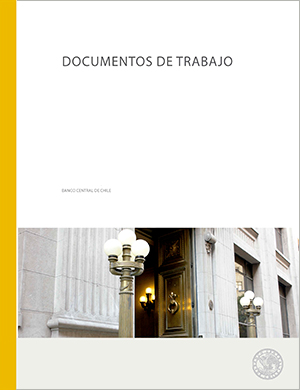Working Papers N° 900: Forecasting Brazilian Inflation with the Hybrid New Keynesian Phillips Curve: Assessing the Predictive Role of Trading Partners
Publications
Working Papers N° 900: Forecasting Brazilian Inflation with the Hybrid New Keynesian Phillips Curve: Assessing the Predictive Role of Trading Partners
Autor: Carlos Medel
Description
Despite that the Brazilian economy is a small-open economy to the world's eye, it is still the largest of South America and, thus, it acts as a big source of financial and macroeconomic spillovers to its trading partners abroad in a number of macro-financial variables including inflationary shocks. Consequently, a comprehensive but parsimonious inflation rate modelling yields important advantages. In this line, the aim of this article is threefold. First, to document if the Brazilian inflation follows the Hybrid New Keynesian Phillips Curve (HNKPC) model, tested by econometric means. Second, to extend the scope of the HNKPC from a close- to an open-economy version through a Global Vector Autoregression (GVAR) specification; aiming to quantify the influence of trading partners in forecast accuracy. Third, to compare the multi-horizon predictive ability of the HNKPC in such a way as to identify the predictive gain (or loss) provided by the trading partners and discriminate between them. The HNKPC forecasts are evaluated in a traditional way and compared with several robustness specifications and country-weighting schemes with the GVAR version. The in-sample results do not reject the baseline hypothesis posed by the HNKPC for the Brazilian economy and its main trading partners. However, to a large extent, the evidence favouring the HNKPC at the end of sample plainly weakens. In predictive terms, the results show that the proposed open-economy version of the HNKPC is the best predictive device for Brazilian inflation in a compacted form in the long run. Notably, the euro area and Japan contribute most to forecast accuracy despite the use of a distance-based
Working Papers N° 900: Forecasting Brazilian Inflation with the Hybrid New Keynesian Phillips Curve: Assessing the Predictive Role of Trading Partners
Boxes and graphics

